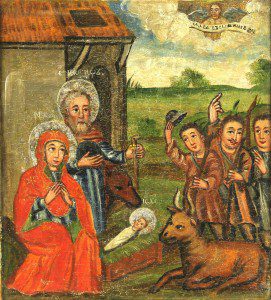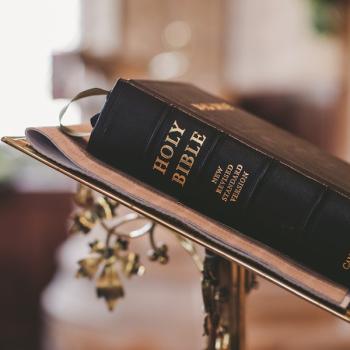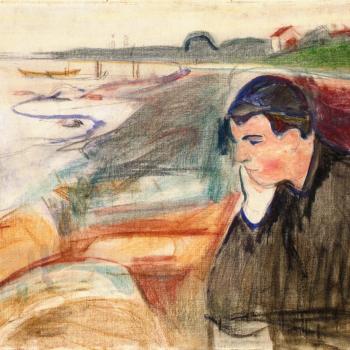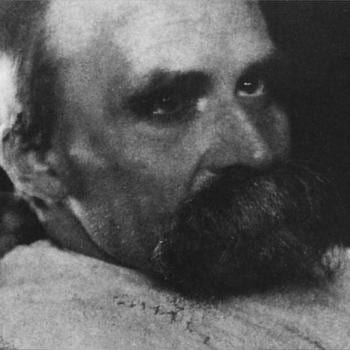
This post is by a new friend of mine, Ben Martin, a PhD student in the philosophy department at Loyola Chicago (he is Roman Catholic). Below you will find his thoughts on re-union between the Catholic and Orthodox Churches. He may be reached at [email protected] for further comment and discussion.
Before we discuss the restoration of communion among the churches, we should discuss the terminology with which we speak of churches. I have often heard Eastern Catholics present themselves as belonging to one of the twenty-four churches of the broader Catholic Church, or of the Catholic Communion. I take issue with this way of speaking for two reasons. First, it does not strike me as very informative. I don’t mean to reduce the discussion to matters so secular as population statistics and power structures, but I find it difficult to group together churches like the Maronite Catholic Church and the Chaldean Catholic Church with the Albanian Catholic Church and the Belarusian Catholic Church in a satisfying way. The former are large patriarchates; the latter lack even metropolitanate status.
Certainly we may choose to call them all churches, and back it up theologically, but this strikes me as more of a legal designation than an identification of visible unity or structure. For example, the Italo-Albanian Catholic Church operates as three separate jurisdictions – two eparchies in Sicily and a territorial abbey in Italy; they do not even employ an identical liturgy – the eparchies have the Arberesh Use, while the abbey has the Italo-Byzantine Use. Aside from their shared history, it appears that these separate jurisdictions are called one church because it is convenient for the Vatican to do so. A similar situation obtains with the regard to the Ruthenian Catholic Church.
This manner of identifying churches – and this is my second point – is hardly promising for the Orthodox who might worry about Rome’s attitude toward other, independent churches. Therefore, to take a small step toward remedying this situation, I propose that we adopt a change for which Eastern Catholics themselves have called – that we accept the Orthodox classification of churches as autocephalous, autonomous, and semi-autonomous. With these terms we can speak of the Catholic Communion as eleven autocephalous churches (Rome, Alexandria, Melkites, Syrians, Maronites, Babylon, Armenia, Kiev, Malabarese, Malankarese, Romania), five autonomous churches (Ruthenians, Hungary, Slovakia, Ethiopia, Eritrea), and eight semi-autonomous churches.
Once we’ve adopted these concepts, it’s easier to speak of how the one, holy, catholic, apostolic Church might look after the healing of the schisms with the Eastern Orthodox, Oriental Orthodox, and Assyrians. Limiting myself to autocephalous churches and anticipating my treatment of canonical territory below, I can imagine the future Orthodox Catholic Communion as the following autocephalous churches:
- Rome – Should the Pope restore the title of Patriarch of the West? Should the Holy See be a patriarchate? What is its canonical territory? Western Europe; the Americas? Australia? China, Japan, Korea, Southeast Asia, the Philippines, the Pacific?
- Constantinople – What happens to the Armenian titular patriarch there?
- Alexandria – I assume the Oriental, Eastern, and Catholic synods will merge to form one Patriarchate of Alexandria; will it retain some role for the Byzantine liturgy? How will it deal with the parallel Latin jurisdictions throughout much of the continent? Will it surrender some canonical territory to Rome or permit the continued existence of parallel Latin jurisdictions within its territory?
- Antioch – Would the five synods want to merge to form one united Church of Antioch? Will this become a tri-ritual church? The Latin Church includes many rites, but would the churches of Antioch find this acceptable? Might it become a bi-ritual church, should the de-Latinization of the Maronite Rite bring it sufficiently close to its Syrian sister-rite? What role will the Byzantine Rite have? If they preferred, might the Maronites end up with their own patriarchate of Lebanon?
- Jerusalem – Might this also become a tri-ritual church? Would each rite take turns as patriarch of Jerusalem? Or would the Byzantine synod retain governance and permit the continued existence of either or both Latin and Armenian titular patriarchs within its territory?
- Babylon – There are three synods to merge. How far does its canonical territory extend? Iraq, Iran; around the Persian Gulf? into Afghanistan and Pakistan? into the northern ‘Stans? Who gets China?
- Etchmiadzin – There are three synods to merge.
- Moscow – Will Moscow keep all of its current territories? Presumably it will absorb both the Russian Catholic Church and the Belarusian Catholic Church. Kiev should receive autocephaly. Moscow might also consider allowing for both Nikonian and pre-Nikonian Uses as the tiny Russian Catholic Church already does and thereby begin to heal some of its own internal schisms.
- Serbia – Two synods will merge. How much of Yugoslavia should it retain? Maybe the Catholic and Orthodox Macedonians will receive autocephaly, as well as the Montenegrins. This is the first patriarchate named for its country rather than its principle city.
- Romania – Two synods will merge.
- Bulgaria – The Bulgarian Catholic Church will be absorbed.
- Georgia – How important is it to sort out Georgia’s canonical rank?
- Ethiopia – The Ethiopian Catholic Church will be absorbed.
- Eritrea – The Eritrean Catholic Church will be absorbed.
- India – If we want to recover a new respect for canonical territory, I think it is worth considering the possibility of inviting the Latins, Malabarese, and Malankarese of India to form their own patriarchate together, maybe as a tri-ritual church if it’s possible. Other arrangements are possible if all parties are content with overlapping jurisdictions. I have also heard that there is resistance to the full de-Latinization of the Malabarese Rite – a united patriarchate of India might consider retaining the partially Latinized Malabarese Rite while restoring its ancient liturgy in a manner acceptable to all of the Indian rites, so that this fourth liturgy might have precedence in the patriarchate. Such an arrangement might also help restore unity with the smaller churches that have retained connections with the Assyrian Church of the East. India could retain its titular patriarchal authority over the East Indies.
- Ukraine – or the Church of Kiev; many synods may merge.
- Cyprus – the first autocephalous metropolitanate
- Greece – The Greek Catholic Church will be absorbed.
- Poland – How Rome might best respect the territorial rights of the Orthodox Church of Poland is not clear. It is probably easiest for the Orthodox Church of Poland to grant Rome permission to continue to support its parallel jurisdictions. The massive difference in populations is awkward. Would Latin and Byzantine Poles prefer an autocephalous bi-ritual church, a patriarchate of Poland?
- Albania – As in India, Rome might consider inviting the Latin Catholics of Albania to form a bi-ritual church with the Catholic and Orthodox Albanians who follow the Byzantine Rite. Alternatively, Rome might seek permission to continue to support its parallel jurisdictions in Albania.
- Czechia – I’m anticipating with regard to its name; will the Slovakian Church receive autocephaly?
- Slovakia – The Slovakian Catholic Church will be absorbed.
- Finland – Will it receive autocephaly?
- Montenegro – Will it receive autocephaly?
- Macedonia – Will it receive autocephaly?
- Moldova – Will it receive autocephaly?
- Estonia – Will it receive autocephaly?
- Latvia – Will it receive autocephaly?













